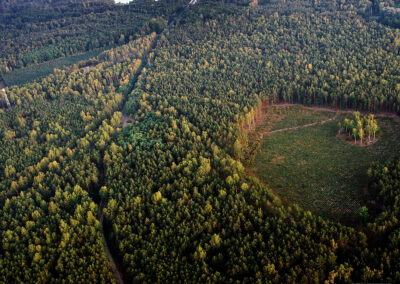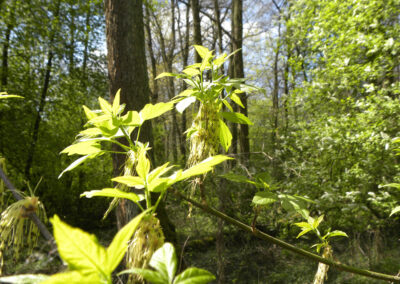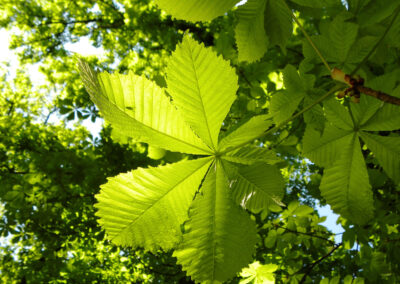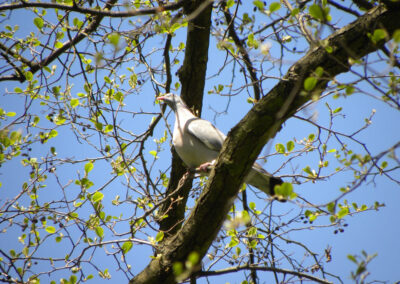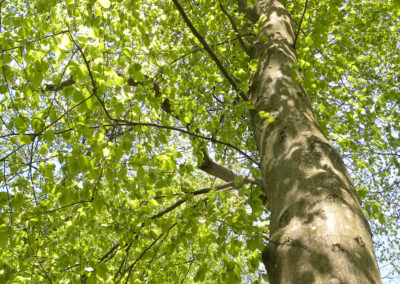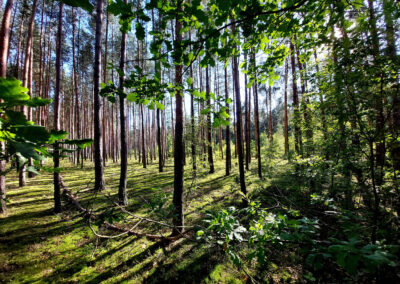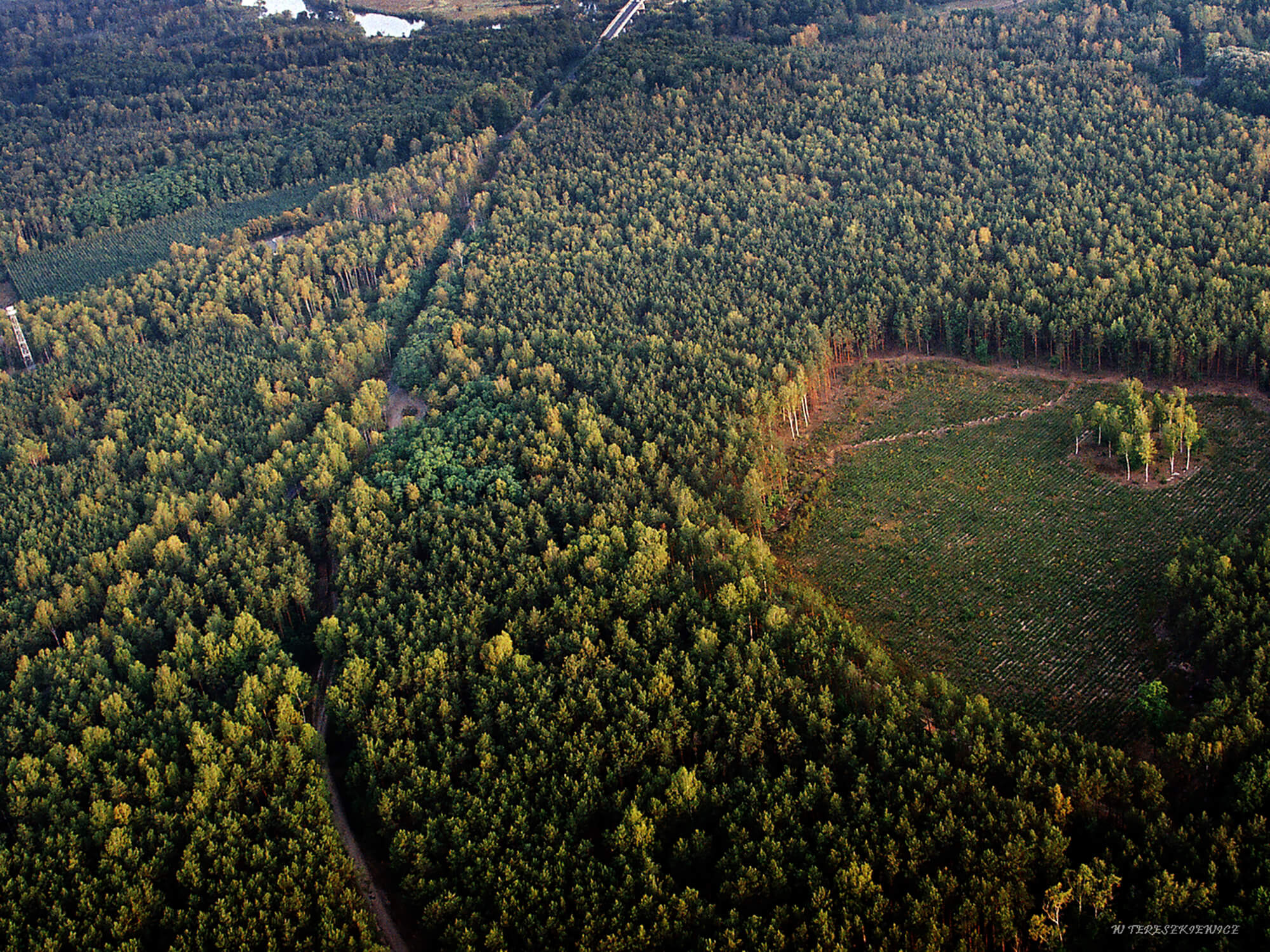
x
Forests
Warka is surrounded by dense forests in the south, covering the ample Pilica River valley. On the other hand, there are the Stromiec Woods, stretching between the Pilica, Radomka, and Vistula Rivers. The latter are dominated by pine trees, with some oaks, birches, and alders. On their outskirts, there are riparian and oak-hornbeam forests, dominated by alder with some ash, elm, sycamore, maple, birch, and pine trees. The area below the escarpment in the river valley is formed by riparian and oak-hornbeam forests, included in the “Natura 2000” Lower Pilica Valley Program.
The forest fauna is also rich. We can find large herbivorous mammals, such as the wild boar, elk, deer, roe and fallow deers, as well as predatory mammals, e.g. weasels, ermines, polecats, stone martens, foxes, and badgers. The list of common rodents and small mammals includes gray hares, shrews, moles, hedgehogs, and several species of bats. The world of birds is diverse, with (white and black) storks, mallards, buzzards, hawks, sparrowhawks, tawny owls, long-eared owls, (large, black, and green) woodpeckers, jays, ravens, and thrushes.
The riparian forests can be found alongside rivers and streams, close to areas that tend to flood, where water carries and deposits fertile silt. Such soil is then called alluvial mud. The typical tree species found in riparian forests are: alders, poplars, elms, ash trees, and oaks.
The oak-hornbeam forest is a multi-species and multi-layer deciduous forest, usually with a clear predominance of hornbeams and oaks. It dominates Poland’s natural vegetation; such forests cover over 40% of the country’s area.
In the 37-acre Warka-Winiary park, visitors will find:
- alder-ash clusters,
- elm-ash clusters,
- oak-hornbeam clusters,
- fresh grasslands.
Additionally, the upper park has diverse historic trees. Apart from the aforementioned ash, elm, alder, and oak trees, there are also linden, hornbeam, chestnut, acacia, maple, and spruce trees.
The Park is extremely rich in avifauna. Visitors will find 47 species of wild birds, including 37 nesting birds. Most numerous are: starlings, fieldfares, chaffinches, blackcaps, song thrushes, blackbirds, tits, (medium and large) woodpeckers, and robins.

